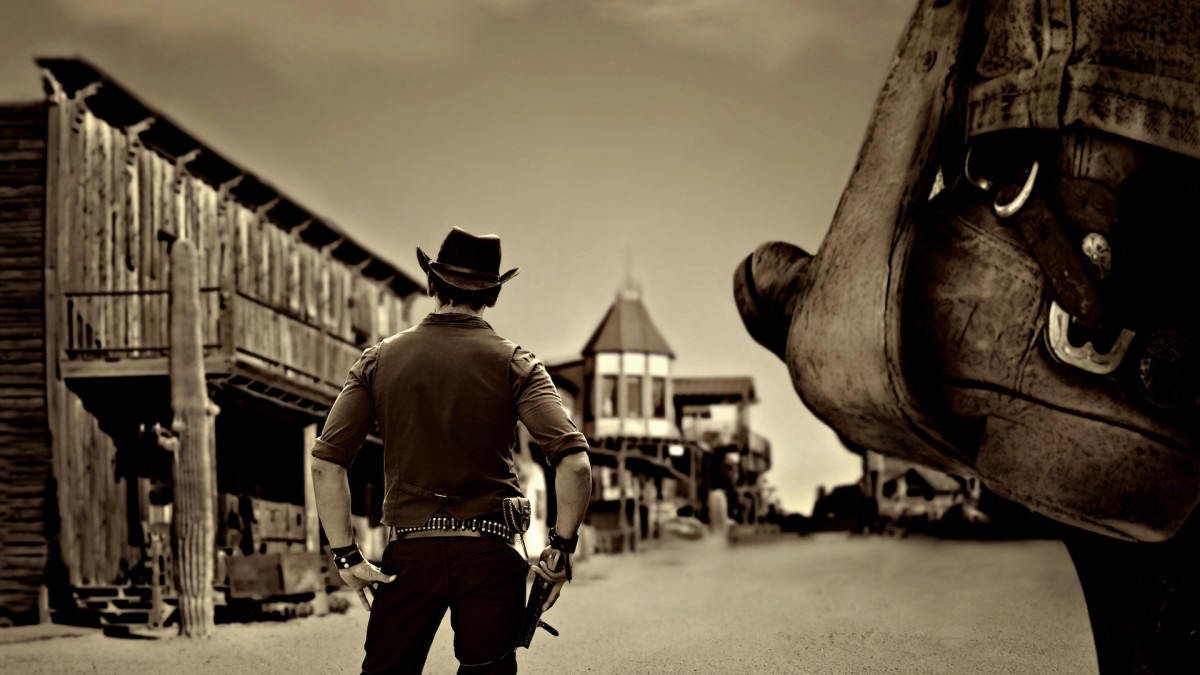
It’s impossible to list all the ways that Hollywood gets guns wrong. Bullets catapult a character ten feet backwards, suppressors render a high-powered rifle completely silent, and some (but not all) plywood cabinets are totally impervious to enemy fire.
At this point, I think viewers are either unaware of these firearm faux pas or, like many hunters and sport shooters, resigned to the fact that some directors just don’t seem to care. Here are a few of the worst examples of what Hollywood has in its arsenal.
Infinite Ammo Unlocked: “Walking Dead”
Only suckers need to reload. At least, that’s what the folks in the film industry seem to think. This mistake is so common I almost didn’t include an example, but this scene from AMC’s “The Walking Dead” is especially egregious.
Other infinite ammo scenes at least include cutaways during which you can imagine a character reloading his firearm. This scene doesn’t. Other scenes also feature handguns or AR-type rifles that might hold 18 or 30 rounds, which makes it more difficult to keep track of how many cartridges are left in the magazine. This scene doesn’t. Hershel fires this shotgun–which holds a maximum of three or four shells–a whopping 25 times before he pauses to slide another four shells into the tube.
Glock Hammer: “Ant Man”
Have you ever noticed that every time a character in a movie points a handgun, the gun makes a clicking sound? The source of this sound is a mystery. Usually, the gun doesn’t have a hammer. And even if it does, it would only need to be cocked once–not every single time a character lowers and then raises a gun.
This scene from Marvel’s “Ant-Man” doubles-down on that mistake. The first four seconds show multiple characters raising handguns, all of which make the aforementioned clicking sounds. One of those handguns is a Glock held by the bad guy, Darren Cross (Corey Stoll).
Fighting ensues. Cross is about to shoot Ant-Man (Paul Rudd) when Hope van Dyne (Evangeline Lilly) activates her bug minions to keep the hammer on Cross’s Glock from dropping. This would have been a clever moment if not for the fact that Glocks don’t have hammers. In fact, not only do Glocks not have hammers, but Cross’s Glock didn’t have a hammer two seconds ago.
Glocks are actually kind of famous for not having hammers. The company is credited with popularizing the striker-fired design, which uses an internal firing pin rather than an external hammer to strike a cartridge’s primer.
Shhhhh: “John Wick 2”
Criticizing Keanu Reeves and the John Wick franchise for firearms mistakes is kind of like nitpicking Michelangelo for a bad brush stroke on the Sistine Chapel. But the movie’s epic and semi-realistic gunfighting sequences also make this scene stand out like a sixth finger on the right hand of God.
I won’t belabor the point: suppressors don’t make guns silent. At least, not silent enough to fire dozens of times in a crowd of people. Maybe if the characters were both using subsonic .22 LR ammunition, they might get away with it. But the Internet Movie Firearms Database (a great source for info on movie guns, by the way) reports that Wick is using a Smith & Wesson SW1911SC "E-Series" in this scene while Cassian (the bad guy) is using a Arsenal Firearms AF-1 Strike One. Neither of these firearms are available in .22 LR.
Falling Guns of Doom: “Adios Sabata”
Hollywood has a long and storied tradition of firearms falling, going off, and hitting bad guys. The most famous of these scenes is this LSD-induced sequence from “True Lies” in which Jamie Lee Curtis drops a MAC-10 down a flight of stairs and takes out an entire platoon of terrorists in the process.
The “True Lies” scene is more ridiculous, but this scene from “Adios, Sabata” is more fun to watch. The good guys trade barbs with the bad guys at the bar until the hero (Sabata) agrees to a duel. But instead of firing from the hip, Sabata touches off a pistol by tipping it over onto a chair. This is one of those times when something is so bad it’s almost good. Enjoy.
Semi-Auto Lever-Action: “Westworld”
This is a single moment rather than an entire scene, but it’s emblematic of Hollywood’s total lack of regard for accurate portrayals of firearms. A character named Hector Escaton (Rodrigo Santoro) walks up to some poor guy lying on the ground and executes him. The camera (for some reason) zooms in on the top of the lever gun, and a spent shell clearly ejects from the rifle the moment Escaton pulls the trigger. Then (for some reason) Escaton uses the lever to cycle the action, proving that this isn’t some kind of futuristic cowboy rifle.
I understand that Westworld is a sci-fi series about a technologically advanced Wild-West-themed amusement park. But if they’re so technologically advanced, why don’t they understand how a lever-action rifle works?
Honorable Mention: “Tombstone”
It pains me to write this, but it’s time we admit the truth: Doc Holiday fires three shots from his side-by-side shotgun in this famous shootout scene in “Tombstone.” There are cut-aways after each shot, so it’s possible he reloaded. But it’s unlikely. RIP, Val.
Last Shot
These may not be the absolute worst portrayals of firearms in Hollywood, but I think they’re representative of some of the more common and frustrating mistakes. If you can think of others, sound off in the comments.




